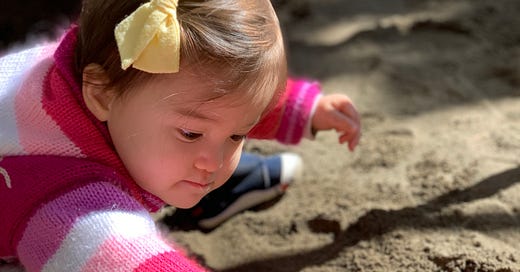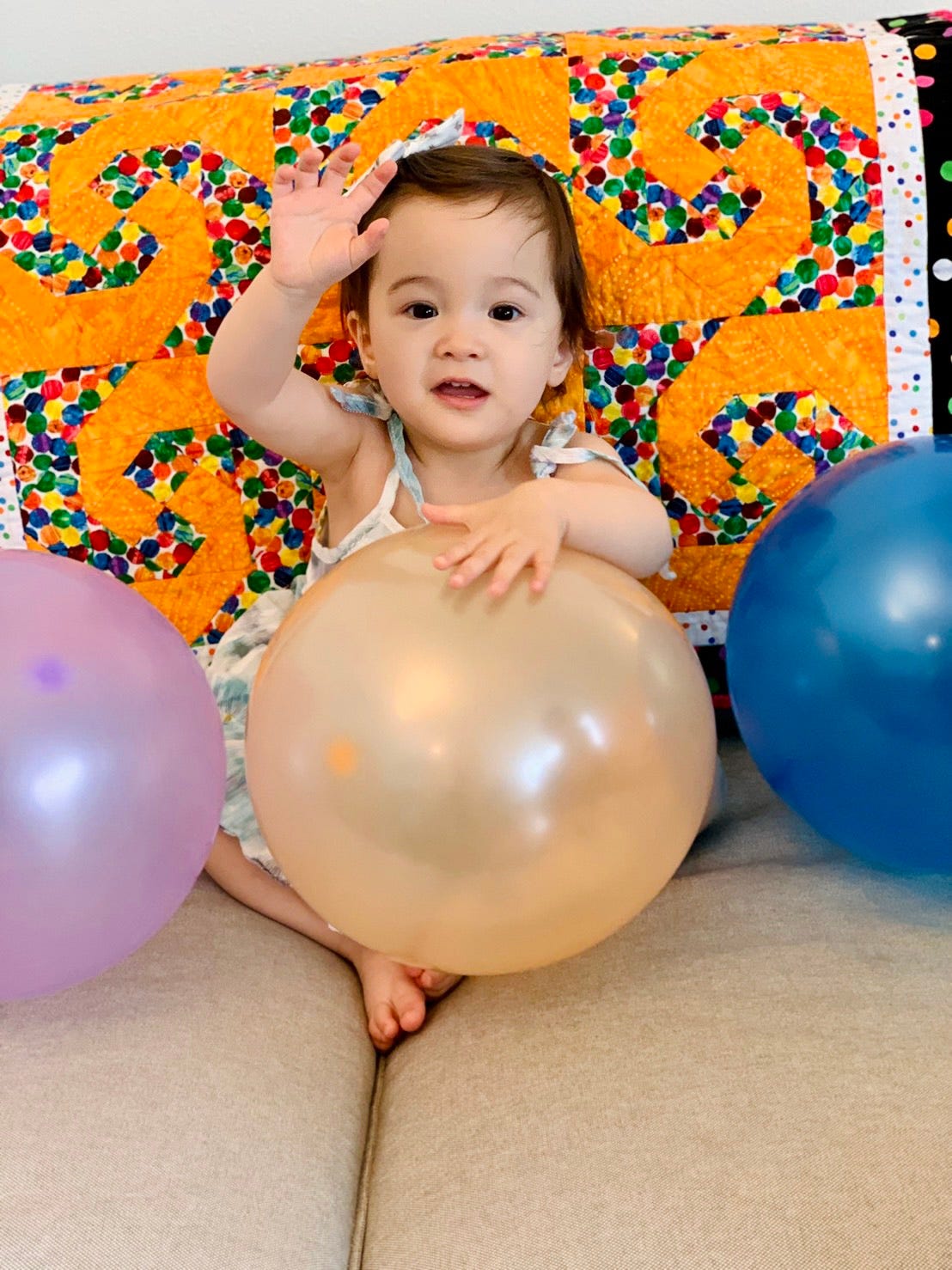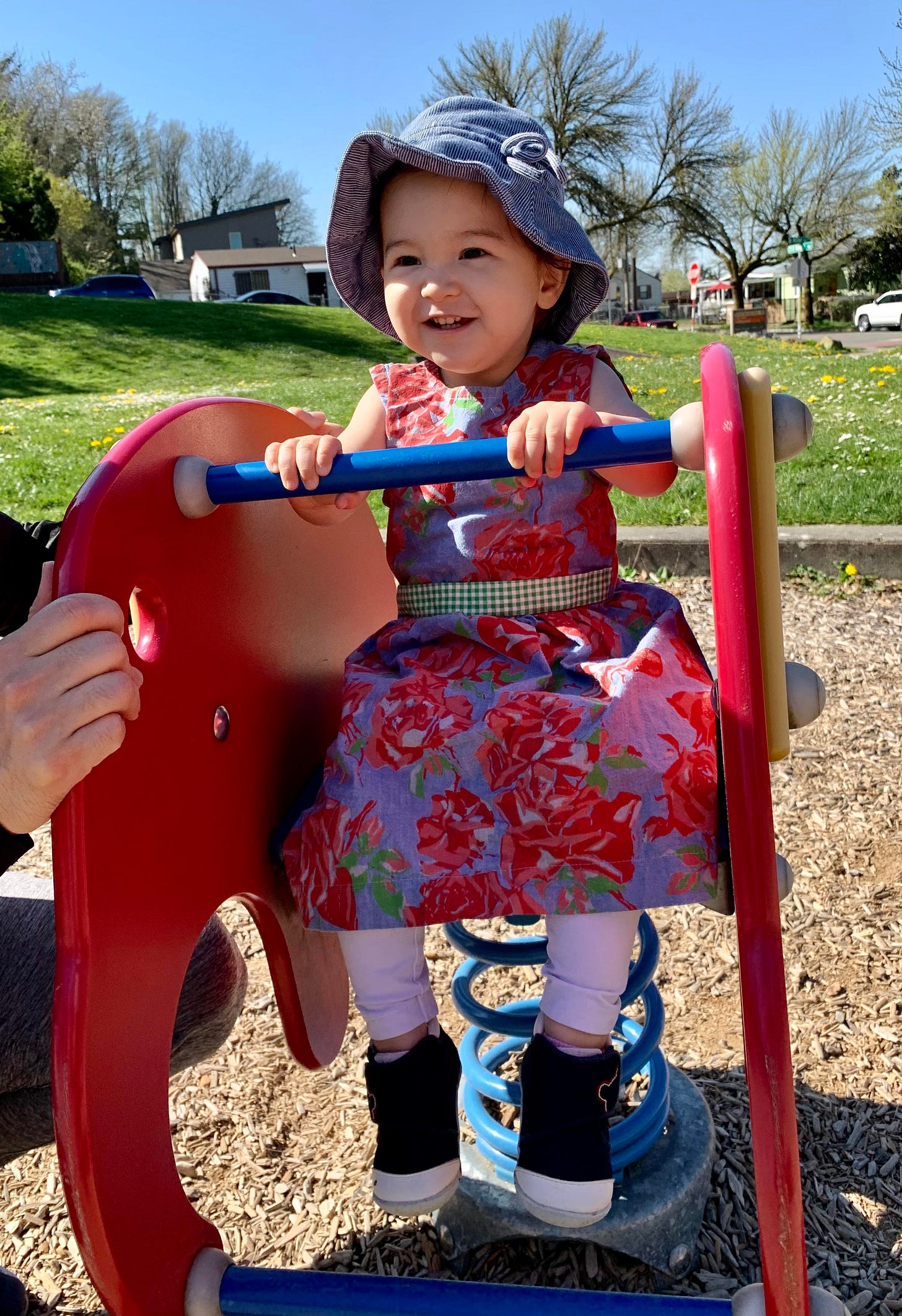Solving Toddler Tantrums
Why tantrums happen according to brain development experts and what our response should be.
Now that L is officially 18 months (today!), we have started dealing with some intense emotions from her, more than ever before. I’ve been reminding myself of everything I’ve learned about toddler brain development and social emotional development as I navigate how to handle these new outbursts from her. Sometimes, it’s hard. Really, really hard to stay calm and be there in the way I know she needs. I constantly remind myself “she is having a hard time, NOT trying to give ME a hard time” and to be her calm and not join her chaos.
With that said, I thought I’d write about what I’ve learned about toddler tantrums and brain development with the hope that it gives you the tools to more readily and easily handle your toddler’s (although much of this applies to older kids as well) big emotions.
What Brain Development has to do with Tantrums and Meltdowns
First, let’s back up and talk about your toddler’s brain. The prefrontal cortex (the part of your brain that regulates emotion, is responsible for making decisions, handles impulse control, and much more) in a toddler is almost nonexistent. The human brain develops slowly bringing at the back and moving forward. Your prefrontal cortex is at the very front of your brain is the last part to fully mature. In fact is isn’t fully developed until around age 25! However, it is very important to note that 95% of the brain develops before age 5 (making early learning experiences SO very important)! It should come as no surprise to us then, that toddlers struggle with all the things that causes tantrums and meltdowns. They are not yet capable of emotional regulation, impulse control, and making many decisions. You can read more about toddler brain development and the prefrontal cortex here, here, and here.
Because the prefrontal cortex is not yet developed in toddlers, how can they regulate their emotions? They can’t. They must rely on an outside source to regulate. This should be their parents and caregivers. This means that we have a very important role in our child’s emotional (and brain) development in the way we respond to and handle their emotions.
Luckily, there are some steps we can take to help our toddlers out when they are having a hard time.
How Should Respond to our Toddler’s Tantrums?
First, acknowledge the way they are feeling and empathize. Let them feel all their emotions. They can’t express them verbally yet so they show us. The trick is to allow the feeling, but not the behavior. For example, “You really want to keep playing with the blocks, it’s hard to stop and come put on your jacket to go out”.
Or, “You want to keep playing with the cat, but he had enough and walked away. That’s tough! It’s ok to feel upset about it” .
You can also help them name their feeling and know it’s ok to feel that way and to let you know. For example, “I can see you’re really frustrated and you threw the block at your sister. It’s ok to be frustrated”.
By seeing them and naming their feelings, you are helping your toddler developing coping mechanisms they will use into adulthood.
This next step is the hardest and most important one: hold your boundary. Boundaries are so important. They provide structure which is what toddlers need and crave! By setting the boundary and sticking to it, you are also preventing more meltdowns later on. Boundaries also allow toddlers to learn to cope with and handle disappointment. Holding the boundary needs to follow immediately after you ok their feelings. For example, “You really want to keep playing with the blocks, it’s hard to stop and come put on your jacket to go out. It is time to leave now”. Or, “You want to keep playing with the cat, but he had enough and walked away. That’s tough! It’s ok to feel upset about it. We need to respect the cat’s choice to be done playing.”
Remember to state the boundary simply. You do not need to explain or justify it.
Finally, give them a small sense of control. Toddlers hear “no” A LOT! It helps to give them choices as they crave having that small amount of control or power on their own life. The easiest way to do this to give them a choice between two things after we have set our boundary. For example, “You really want to keep playing with the blocks, it’s hard to stop and come put on your jacket to go out. It is time to leave now. You can choose the pink jacket or the white”. Or, “You want to keep playing with the cat, but he had enough and walked away. That’s tough! It’s ok to feel upset about it. We need to respect the cat’s choice to be done playing. You can help me in the kitchen or read a book.”
You can read more about responding to toddler tantrums here, here, here, and here.
And Always Remember…
Stay calm. As hard as it may be and as many times as your toddler may press your buttons, it will be easier if you remain calm. This might mean you have to step away and take a minute to calm down yourself before you help regulate your toddler.
You can read tips on how to stay calm here, and here.






